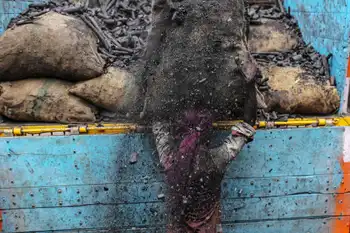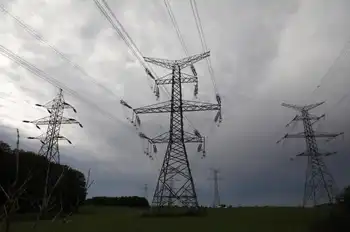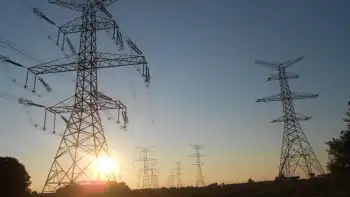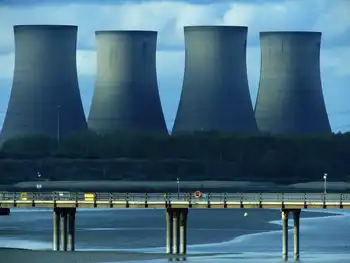Biomass plan triggers questions
By Checkbiotech.org
Substation Relay Protection Training
Our customized live online or in‑person group training can be delivered to your staff at your location.

- Live Online
- 12 hours Instructor-led
- Group Training Available
The Milwaukee utility this month said it wants to build a $250 million power plant near Wausau in Rothschild that would generate 50 megawatts of electricity, enough to power 40,000 homes.
The biomass project is in response to the state's renewable energy mandate that requires 10% of Wisconsin's electricity to come from wind turbines, solar panels and other renewable sources by 2015.
Plans for another project in Ashland on Lake Superior have raised concerns about the impact of the plant on the state's papermaking industry.
The Wisconsin Paper Council and the Flambeau River Papers in Park Falls have raised concerns about plans by Xcel Energy Corp. to convert a coal-fired boiler in Ashland to burn wood.
If approved by state regulators, the Ashland site would become the biggest biomass power plant in the Midwest, Xcel said last year.
The Clean Wisconsin environmental group sought a review of the Ashland plant to determine the impact on northern forests and greenhouse gas emissions.
And Flambeau River Papers of Park Falls raised questions about whether the Xcel project would raise prices for wood that would be used in a bio-refinery that Flambeau intends to build to make biodiesel and wax.
"We don't want to overharvest the forest, we want to make sure there's enough residue on the forest floor," said Keith Reopelle of Clean Wisconsin.
"With all of the additional projects going on in the area, particularly pellet plants and the broad interest in use of biomass for energy, we think there's a serious risk of harming existing forest products industries," said Earl Gustafson, vice president at the Wisconsin Paper Council, based in Neenah.
Experts hired by Xcel Energy of Eau Claire, including the Energy Center of Wisconsin, said there is plenty of waste wood left over after forests are culled for logging.
"We spoke with the foresters from the counties in the area and they indicated the vast majority of this resource is not being collected," said Sean Weitner of the Energy Center during a hearing on the Xcel proposal.
"There's enough wood to go around for everyone," said Pete Coutu of Plum Creek Timber, the largest owner of private forestland in the state.
An analysis by the state Public Service Commission said there is a risk to the northern forests from biomass power projects, but only if loggers and timber companies fail to follow sustainable harvesting practices.
Wisconsin has been a leader in sustainable forestry, Gov. Jim Doyle said at the announcement of the We Energies biomass power plant this month.
But Katie Nekola of Clean Wisconsin said the PSC should do a more detailed review of the project and its impact on greenhouse gas emissions, taking into account emissions caused by logging.
"If biomass is worth doing, it's worth doing right," she said.
The move to burn more wood is part of a push by the state Office of Energy Independence to boost the supply of renewable energy and expand markets for energy that can be produced in Wisconsin - as opposed to coal, which is imported from Wyoming and other states.
If approved by state regulators, the We Energies biomass plant would burn 500,000 tons of waste wood per year when built in 2013.
While critical of the Ashland project, the Paper Council supports the project proposed by We Energies and Domtar Corp., a Montreal-based paper company that's a member of the council.
"Domtar has decades of experience in the forest products industry," Gustafson said. "They and We Energies are targeting waste wood. As a paper manufacture itself, Domtar won't be doing anything to harm their market for pulp wood."
Waste wood - tree trimmings, bark and chips left over from logging - amounts to a plentiful resource.
A study by the U.S. Department of Energy in 2006 found the Upper Midwest, including Iowa, Minnesota, Illinois, Wisconsin and North Dakota, has the biggest potential biomass resource.
Energy from wood pulp and plant fibers could be a key economic engine for the state, Doyle said.
The Great Lakes Bioenergy Research Center at the University of Wisconsin-Madison is researching ways to develop energy from wood, switchgrass and other plant matter.
In 2007, it received the largest federal grant in the university's history - $125 million. The center is a cornerstone of plans to develop a UW energy institute, Doyle said.
Across Wisconsin, a string of biomass or biofuel projects that would burn waste wood have been announced over the past year or so, including Flambeau's Park Falls bio-refinery. They include:
• In Cassville, DTE Energy Services Inc. of Ann Arbor, Mich., has begun construction to convert a coal-fired power plant to burn wood, primarily urban wood waste, said John Austerberry of DTE. The conversion is projected to create 60 construction jobs and 30 permanent jobs, DTE executives told Cassville community leaders this year.
• In Menasha, studies are under way to explore burning biomass instead of coal at a utility power plant.
• The New North, the economic development arm that is northern Wisconsin's counterpart to the Milwaukee 7, is seeking investors to develop a cellulosic ethanol plant at a former paper mill in Niagara and is conducting a two-phase study to assess the biomass resource in the north central part of the state.
• The state plans to spend $250 million to convert the Charter Street heating plant at the UW-Madison to burn biomass. Similar projects are being studied at other UW campuses.
In Ashland, the Xcel project was supported because it would create more opportunities for the state's timber and logging interests.
"This project will mean jobs for our loggers in an area that is desperately in need of economic stimuli," Roger Hanson of Ashland testified at a hearing last month.
Clean Wisconsin said questions remain about biomass, even if it's better than coal.
Like coal-fired power plants, generators burning wood release carbon dioxide into the air.
David Mladenoff, a UW forestry expert, testifying for Clean Wisconsin in the Ashland case, said the state needs to do a more thorough review of the impact of these projects on the North Woods and on greenhouse gas emissions.
"Wisconsin is at an important policy juncture," Mladenoff said.
"It is not enough to say that burning wood is better than burning coal, while ignoring the impacts of burning wood. We need to get this right from the beginning."











